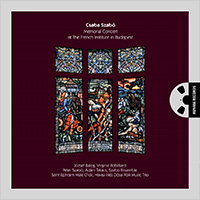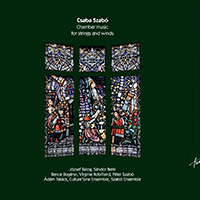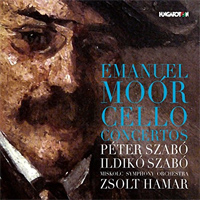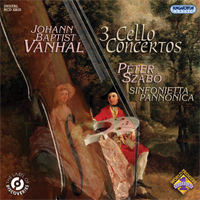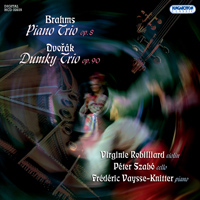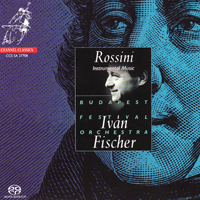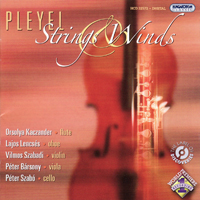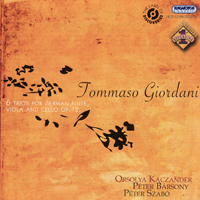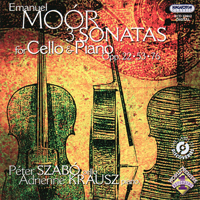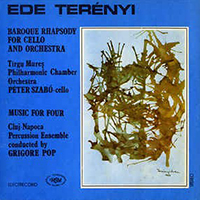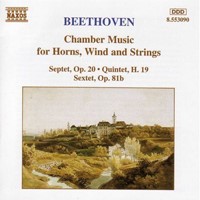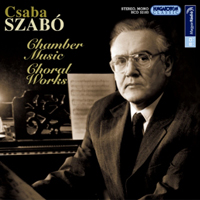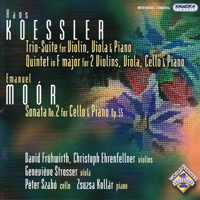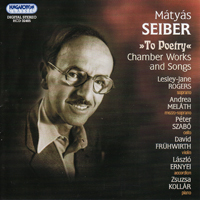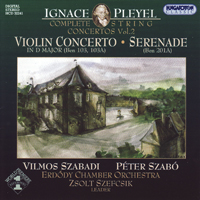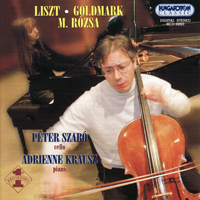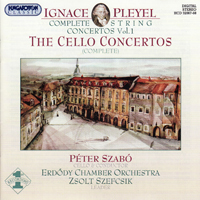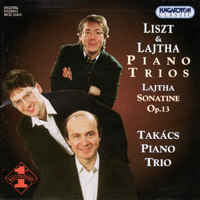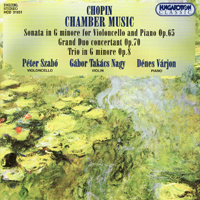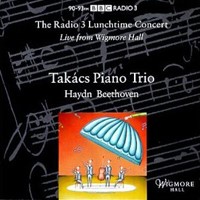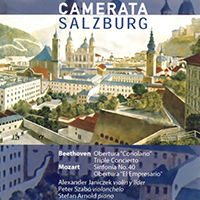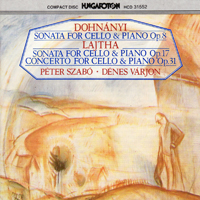Ignace Pleyel: Violin Concerto in D major, Serenade for solo violin and cello, strings and two horns
(String concerto No. 2.)
Vilmos Szabadi -- violin
Péter Szabó -- cello
Erdődy Chamber Orchestra
Concert master Szefcsik Zsolt
Hungaroton Classic HCD 32241
The genre of concerto demands an independent and pragmatic approach from an orchestra with a large woodwinds section, because not only do they have to accompany the soloist/s, but they also have to partner the tutti lines. Pleyel's Violin Concerto in D major and Serenata is played by Vilmos Szabadi, who performs the thus far unknown compositions with discerning taste and reliable knowledge of style.
The composer's themes, indicating probably Haydn's influence, do not by any means receive such an ingenious elaboration as we expect in his master's pieces. The occasionally overwhelming verbose moments are wonderfully balanced by Szabadi's clear definitions, simple and pure interpretation. He does not display his technique only for its own sake, although both of the concertos provide plenty of opportunities for this (the origins of the cadences are not revealed). We can enjoy his massive but flexible voice, his rich gestures and plain performance in the slow movements. It is quite unfortunate that Szabadi is responsible only for his own line and his fastidiousness does not affect the members of the orchestra, who stray alongside the soloist through the whole composition. The sound image is not clean enough, as if lacking a unified concept. The intonation does not satisfy, the lines are inharmonious, so the musicians cannot integrate the ensemble into a concentrated whole. The tutti does not present itself either as a counterpoint, or together with the solo.
The time coordinates for a musical interpretation are always defined by the bass. If it is cumbersome, if it does not have a strength or flow, it impedes the musical energy, rendering the middle and upper voices' task more difficult. Fortunately, this deficiency is no longer a problem, the lower strings find a leader in Péter Szabó's display. In this piece the concerto relation of the two instruments is uneven, the violin plays a bigger role during the first three movements and only the finale rondo allows a more balanced dialogue between them. The cello solo parts inserted into the violin solos stand out freely in Péter Szabó's performance.
An interesting bonus on the disc is that it presents the Pleyel violin concerto with two different finales. In the numbered order of recordings the later version, the definitely more effective 6/8 rondo- recalling Haydn- is played first; then the earlier version sounding slightly less exciting – obviously it was intentional that it was pushed into the background from 1788. It makes a better impression if listening to it for the second time we automatically chose the later version as third movement.
Translation by Susan Kapás
Muzsika
July 2004


